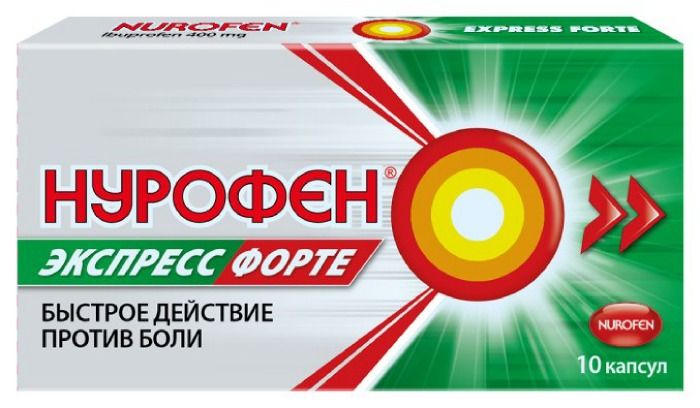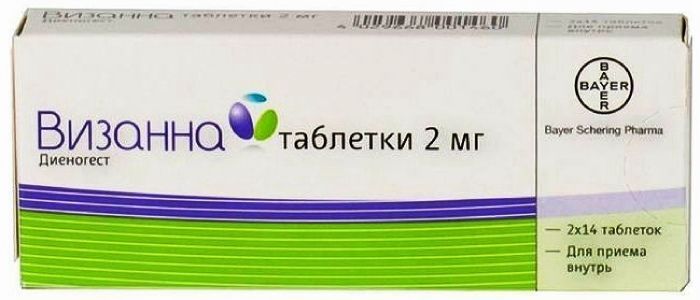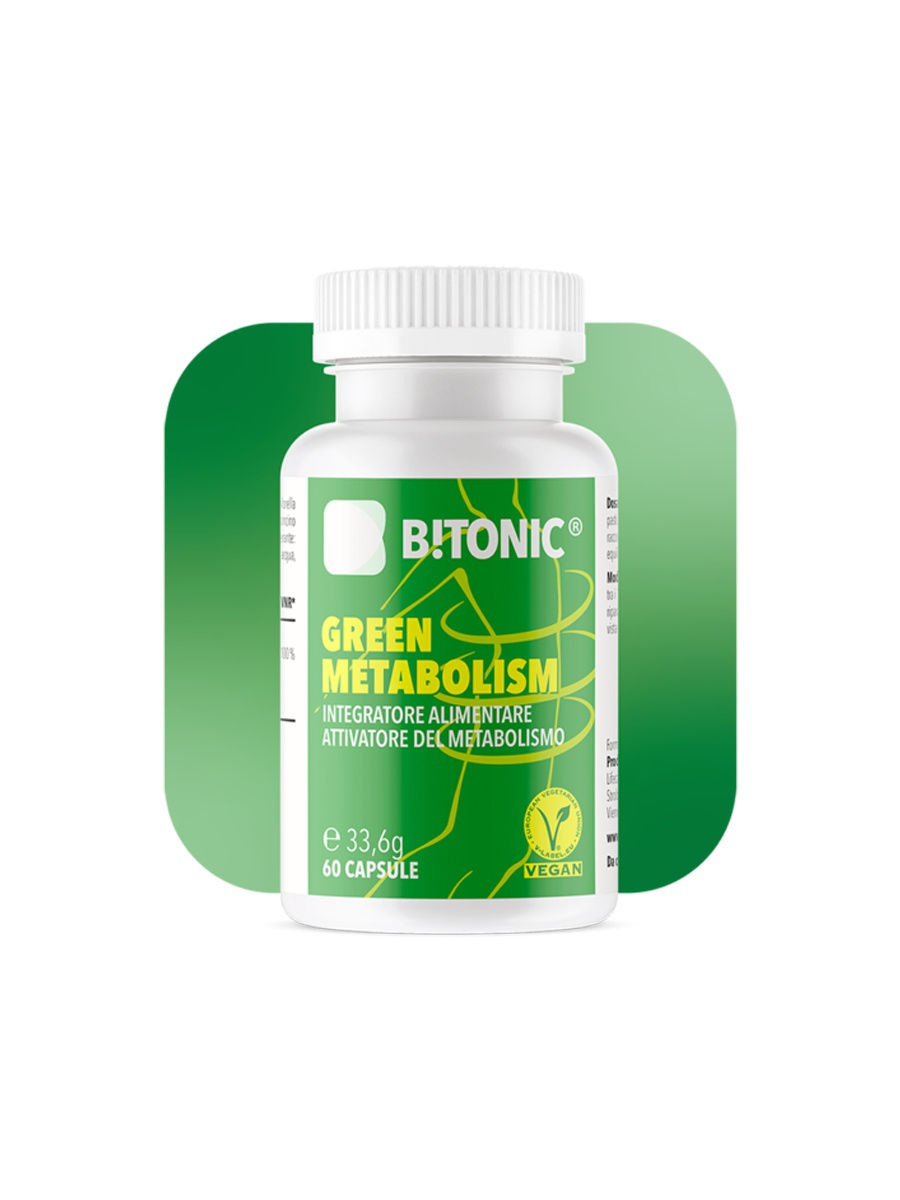- No products in the cart.

Analgin injection 2ml amp 50% 10 pcs
$1.30
Analgin injection 2ml amp 50% 10 pcs
Description
Composition
Active substance:
1 ml solution contains:
Metamizole 500 mg.
Excipients:
Water for injections to 1 mL.
Description:
Clear, colorless or slightly colored liquid.
Product form:
Solution for intravenous and intramuscular administration of 500 mg / ml.
Packing 10 ampoules of 2 ml.
Contraindications
Hypersensitivity to metamizole sodium and other derivatives of pyrazolone as well as pyrazolidinyl, e.g., phenylbutazone (including patients undergoing agranulocytosis due to the use of these drugs), or other components of the formulation. Analgesic intolerance asthma or analgesics (urticaria – angioedema), i.e. patients with bronchospasm or other forms of anaphylactoid reactions (e.g. urticaria, angioneurotic edema) in response to the use of salicylates, acetaminophen, nonsteroidal anti-inflammatory drugs such as diclofenac, ibuprofen, indomethacin or naproxen. Violation of bone marrow hematopoiesis (e.g., after cytostatic therapy) or diseases of the hematopoietic organs. Hereditary deficiency of glucose-6-phosphate dehydrogenase (hemolysis). Acute intermittent hepatic porphyria (porphyria risk of attack). Acute renal or hepatic failure.
Pregnancy and breast-feeding. Infancy (up to 3 months or weighing less than 5 kg). Infants aged 3 to 12 months (only contraindication for intravenous administration)
Carefully
Hypotension (systolic blood pressure below 100 mm Hg. V.), A decrease in blood volume, hemodynamic instability (myocardial infarction, multiple trauma, shock commencing) starting heart failure, high fever (increased risk of abrupt reduction in blood pressure). Diseases for which a significant reduction in blood pressure may have increased risk (patients with severe coronary artery disease and stenosis of cerebral arteries). Chronic alcohol abuse.
Bronchial asthma, especially in conjunction with the accompanying polypous rhinosinusitis; chronic urticaria, and other atopic (allergic diseases in development of which a significant role belongs hereditary predisposition to sensitization: pollinosis, allergic rhinitis, etc.) (increased risk of anaphylactic / anaphylactoid reactions).
Alcohol intolerance (reaction even small quantities of certain alcoholic beverages with symptoms such as itching, tearing and redness of the face marked) (increased risk of anaphylactic / anaphylactoid reactions). Serious disorders of liver and kidney function (recommended use of low doses due to the possibility of slowing down hatching Metamizole).
Dosage
500 mg / ml
Indications
Severe acute or chronic pain in trauma and postoperative pain, colic, for cancer and other conditions where contraindicated other therapeutic measures. Fever, resistant to other therapies.
Interaction with other drugs
With cyclosporine
When applied simultaneously with cyclosporin may be a decrease in its concentration in the blood, so their combined use requires monitoring of the concentration of cyclosporine in the blood.
With other non-narcotic analgesic
Simultaneous application Metamizole with other non-narcotic analgesic agents can lead to mutual reinforcement of toxic effects.
With tricyclic antidepressants, oral contraceptives, allopurinol
Tricyclic antidepressants, oral contraceptives, allopurinol violate Metamizole metabolism in the liver and increase its toxicity.
With barbiturates, phenylbutazone and other inducers of microsomal liver enzymes
Barbiturates, phenylbutazone and other inducers of microsomal liver enzymes weaken the effect Metamizole.
With sedatives and tranquilizers
Sedatives and tranquilizers enhance analgesic effect Metamizole. Concomitant use with chlorpromazine or other derivatives of phenothiazine can lead to severe hypothermia.
With drugs having high correlation with the protein (oral hypoglycemic agents, oral anticoagulants, corticosteroids and indomethacin)
Metamizole sodium, displacing connection with blood plasma proteins hypoglycemic agents for oral administration, oral anticoagulants, and indomethacin glucocorticosteroid agents, increases their activity.
Since myelotoxicity drugs
Myelotoxicity drugs enhance expression gematotoksichnosti Metamizole.
With methotrexate
Simultaneous application Metamizole with methotrexate can amplify gematotoksicheskim methotrexate, especially in elderly patients.
It is therefore recommended to avoid their simultaneous use.
With Thiamazolum and sarcolysine
Methimazole and sarkolizin increase the risk of leukopenia.
From Codeine, blockers of histamine H2-receptors and propranolol
Codeine blockers H2-histamine receptors and enhance the effects of propranolol Metamizole.
Radiopaque substances, colloidal blood substitutes and penicillin
Radiopaque substances, colloidal and penicillin blood substitutes should not be used during treatment metamizole sodium (increased risk of anaphylactic / anaphylactoid reactions).
With acetylsalicylic acid (ASA)
When the joint application metamizole sodium can reduce the influence of ASA on platelet aggregation. Therefore, this sequence should be used with caution in patients receiving ASA as antiplatelet agents.
Since bupropion
Metamizole can reduce the concentration of bupropion in the blood, which should be taken into account while their application.
Overdose
Symptoms: an overdose may cause the following symptoms: nausea, vomiting, abdominal pain, decreased renal function / acute renal failure with oliguria (e.g., due to the development of interstitial nephritis), more rarely symptoms from the central nervous system (dizziness, somnolence, noise ears, delirium, impaired consciousness, coma, convulsions) and a sharp decrease in blood pressure (sometimes progressing to shock), as well as cardiac arrhythmia (tachycardia), hypothermia, dyspnea, acute agranulocytosis, gemorragich esky syndrome, paralysis of respiratory muscles. Upon receiving high doses of excretion through the kidney nontoxic metabolite (rubazonovoy acid) may cause red coloration of urine.
Treatment: the specific antidote is not known. In overdose shown diuresis. The main metabolite (4N-metilaminoantipirin) can be displayed by hemodialysis, hemofiltration, hemoperfusion or filtration blood plasma. With the development of seizures – intravenous diazepam and fast barbiruratov.
pharmachologic effect
Pharmacological group:
Non-narcotic analgesic agent.
Pharmacodynamics:
Metamizole sodium is a pyrazolone derivative. It has analgesic, antipyretic and weak anti-inflammatory action, the mechanism of which is associated with inhibition of prostaglandin synthesis. Mechanism of action does not differ from other non-steroidal anti-inflammatory drugs.
Action develops over 20-40 minutes and reaches its maximum after 2 hours.
When administered intravenously, the maximum effect developed after 20-40 min.
Pharmacokinetics:
After administration is rapidly absorbed and enters the liver, where it undergoes hydrolysis to form the active metabolite, unaltered sodium metamizole found in blood in small amounts only after intravenous administration. After intravenous administration half-life period for metamizol at 14 minutes.
Approximately 96% is excreted in the urine as metabolites. Communication active metabolite to plasma proteins – 50-60%. Advantageously excreted by the kidneys.
Metabolites of 4N-atsetilaminoantipirin (AAA) and 4N-formilaminoantipirin (FAA) does not possess pharmacological activity.
All metabolites of the inherent non-linear pharmacokinetics. The clinical significance of this phenomenon is not known. When the short-term application of the cumulation of metabolites is largely irrelevant.
Metamizole crosses the placenta. Metamizol metabolites into breast milk. Communication with plasma proteins 4N-metilaminoantipirina (IAA) is 58%, 4N-aminoantipyrine (AA) – 48%, FA – 18% AAA – 14%.
After a single oral dose of 85% found in urine as metabolites, including 3 ± 1% – IAA, 6 ± 3% – AA, 26 ± 8% – AAA and 23 ± 4% – FAA.
Renal clearance after a single dose of 1 g sodium inwardly metamizol for MAA is 5 ± 2 mL / min, AA – 38 ± 13 ml / min, AAA – 61 ± 8 ml / min and FAA – 49 ± 5 ml / min.
Corresponding plasma half-life periods for IAA – 2.7 ± 0.5 h, AA – 3.7 ± 1.3 h
AAA – 9.5 ± 1.5 hours and FAA – 11.2 ± 1.5 hours.
elderly
In elderly patients, the area under the curve value of “concentration-time» (AUC) increased by 2-3 times. In patients with liver cirrhosis and half-lives of IAA
FAA with single dose of the drug increased approximately 3-fold, while the AA and AAA half-lives do not follow the same pattern. Such patients should avoid the use of high doses.
Renal function
According to reports of renal failure rate of excretion of certain metabolites (AAA and FAA) decreases. Such patients should avoid the use of high doses.
Pregnancy and breast-feeding
Pregnancy
Metamizole crosses the placental barrier. Data on the use Metamizole during pregnancy is limited. According to the results of preclinical studies Metamizole teratogenic in rats and rabbits has been detected in high doses fetotoxicity observed. Since adequate data on the use of no metamizole sodium in humans should not be taken in the first trimester, second trimester metamizole sodium can be used only if the expected benefit to the mother outweighs the potential risk to the fetus. Despite the fact that we can not exclude metamizole sodium weakly inhibits prostaglandin synthesis possibility of premature (prenatal) closing the blood (Botallova) flow, as well as perinatal complications caused by platelet aggregation disorder in the mother or the newborn.
Therefore, metamizole sodium contraindicated in the third trimester of pregnancy.
lactation
Metabolites Metamizole into breast milk, so when using the drug as well as within 48 hours after the last dose necessary to discontinue breastfeeding.
Conditions of supply of pharmacies
Prescription.
side effects
Adverse reactions classified as follows, according to the WHO (World Health Organization): very often (> 1/10); common (> 1/100, 1/1000, 1/10000,
Violations of the heart
Frequency unknown: Kounisa syndrome (allergic coronary syndrome manifested by clinical and laboratory signs of angina caused by inflammatory mediators).
Violations by the immune system
Rare: anaphylactic / anaphylactoid reactions.
Very rare: analgesic asthma.
Frequency unknown: anaphylactic shock.
Metamizole can cause anaphylactic or anaphylactoid reactions, which in rare cases can be severe and life-threatening. They can occur even if you have previously taken the drug many times without any complications. Such drug reactions may develop immediately or within a few hours after administration Metamizole usually within one hour. In milder cases are manifest as skin symptoms, and symptoms of the mucous membranes (itching, burning, flushing, urticaria, edema) or as dyspnea or complaints from the gastrointestinal tract. In severe cases, these reactions are transformed into generalized urticaria, angioedema heavy (especially with the involvement of the larynx), severe bronchospasm, cardiac arrhythmias, sudden decrease in blood pressure (which is sometimes preceded by high blood pressure) and to the development of circulatory shock. In individuals with asthma syndrome analgesic intolerance analgesic drugs, these reactions usually occur in the form of attacks of bronchial asthma.
Violations of the skin and subcutaneous tissue
Uncommon: dermatitis, fixed drug.
Rare: skin rash.
Frequency unknown: Stevens-Johnson syndrome, Lyell syndrome (toxic epidermal necrolysis).
Blood disorders and lymphatic system
Rare: leukopenia.
Very rare: agranulocytosis, including cases with fatal outcome, and thrombocytopenia.
Frequency not known: aplastic anemia, pancytopenia, including cases with fatal outcome.
These reactions are immunologic reactions in nature. They can occur even if the drug previously used many times without any complications.
Typical symptoms are agranulocytosis lesions of the mucous membranes (oral cavity and pharynx, the anorectal area and genitals), sore throat, fever. However, the use of antibiotics, these effects can be mild. Sometimes, but not always, there was a slight increase in the lymph nodes or spleen. Erythrocyte sedimentation rate significantly increased granulocyte drastically reduced or they are not defined. Typically, the hemoglobin parameters, red blood cells and platelets are normal, but may occur and deviations.
Typical symptoms of thrombocytopenia were increased tendency to bleeding and occurrence of petechiae in the skin and mucous membranes. If there is an unexpected deterioration of general condition, fever does not subside or there are new or painful ulceration of the mucous membranes, especially in the mouth, nose or throat, treatment strategy involves the immediate abolition of the drug, without waiting for laboratory results.
With the development of pancytopenia drug should be discontinued and monitor complete blood count to return it to normal parameters (see. “Special Instructions”).
Violations by vessels
Uncommon: hypotension isolated.
After taking the drug to isolate transient decrease in blood pressure (possibly due pharmacologically and is not accompanied by other manifestations anaphylactic / anaphylactoid reactions); in rare cases, the decrease in blood pressure can be very pronounced. If fever is also possible a sharp dose-dependent decrease in blood pressure without other signs of hypersensitivity reaction.
Violations of the kidneys and the urinary tract
Very rare: impaired renal function.
Frequency not known: interstitial nephritis.
In very rare cases, in patients with impaired renal function, possibly a sharp deterioration in kidney function (acute renal failure), in some cases with oliguria, anuria or proteinuria.
Common disorders
Uncommon: possibly urine staining in red color due to the presence in the urine metabolite – rubazonovoy acid.
special instructions
In the treatment of patients receiving cytostatics, and children under 5 years of treatment metamizol sodium should only be done under medical supervision.
Anaphylactic / anaphylactoid reaction
Increased risk of hypersensitivity reactions metamizole sodium causes the following conditions: asthma analgesic or analgesics intolerance; bronchial asthma, particularly with concomitant polypous rhinosinusitis; chronic urticaria; Alcohol intolerance (increased sensitivity to alcohol) on which background even when receiving a small amount of alcohol, patients appear sneezing, watery eyes and a pronounced redness of the face. Alcohol intolerance may indicate a previously unidentified syndrome aspirin asthma; intolerance or hypersensitivity to dyes (e.g., tartrazine) or preservatives (e.g., benzoate). Before using metamizol sodium is necessary to conduct a thorough survey of the patient’s medical history in order to identify information.
In the case of Metamizole in these patients requires strict medical supervision because of their condition and need to have the means to provide them with emergency assistance in the event of anaphylactic / anaphylactoid reactions.
In predisposed patients anaphylactic shock can occur, so patients with asthma or atopy metamizole sodium should be used with caution.
Severe skin reaction
Against the background of Metamizole described life-threatening skin reactions such as Stevens-Johnson syndrome (DSS) and toxic epidermal necrolysis (TEN). When symptoms SSc or heater (such as, progressive skin rash, often with blisters or mucosal lesion) treatment metamizole sodium should be stopped immediately, it should not start again.
Patients should be aware of the symptoms of these diseases. They should be carefully monitored skin reactions, especially during the first weeks of treatment.
Agranulocytosis / pancytopenia
With long-term use must be monitored picture peripheral blood. While taking metamizole sodium may develop agranulocytosis. It occurs very rarely lasts at least a week, does not depend on the dose, can be severe, life-threatening or even lead to death of the patient. In this regard, the detection of symptoms of fever, chills, sore throat, difficulty swallowing, stomatitis, erosive and ulcerative lesions of the oral cavity, vaginitis or proctitis, reducing the number of peripheral blood neutrophil count less than 1500 per mm3 should stop taking the drug and consult a doctor .
In the case of pancytopenia treatment should be discontinued immediately, the indicators developed analyzes of blood is necessary to control up to their normalization All patients should be aware that the appearance of symptoms of pathological changes in the blood (eg, general malaise, infection, persistent fever, bruising, bleeding, pallor) while taking Metamizole, you should immediately seek medical help.
Isolated hypotensive reactions
Metamizole can cause hypotensive response (see. also “Side effect”). These reactions are dose-dependent wear. The risk of such reactions is also increased when: the preceding hypotension, reduction in circulating blood volume or dehydration, unstable or acute hemodynamic poor circulation (e.g., in patients with myocardial infarction or injury), patients with fever.
Therefore, such patients should be detailed diagnostics and set them carefully monitored. To reduce the risk of hypotensive reactions may require preventive measures (stabilization of hemodynamics).
Patients whose blood pressure reduction should be avoided at all costs (for example, with severe coronary heart disease or significant stenosis of cerebral arteries), metamizole sodium may be used only with careful monitoring of haemodynamic parameters.
Abdominal pain
The drug must not be used to treat acute abdominal pain (to determine its cause).
Impaired function of the liver and kidneys
In patients with impaired liver function and kidney recommended to avoid receiving Metamizole at high doses.
Excipients
Since the product contains sodium, it is necessary to take into account the persons who are on a diet of low sodium content.
If no effect within 3 days should stop taking the drug and consult a doctor.
Rules of administration
Intravenous Metamizole should be carried out very slowly (not more than 1 ml per minute) to the first signs of anaphylactic / anaphylactoid reactions injection could be discontinued, and in order to minimize the risk of certain hypotensive reactions.
If intramuscular administration is necessary to use a needle for intramuscular injection
The effect on the ability of control of vehicles and mechanisms
Given the profile of the side effects of the drug, be careful when driving and mechanisms, as well as when performing tasks that require increased attention and psychomotor speed reactions.
Storage conditions
Store at a temperature not higher than 30 ° C. Keep out of the reach of children.
Dosing and Administration
Adults and adolescents 15 years and older
Preparation is administered intramuscularly or intravenously (if severe pain) 1-2 ml of 500 mg / ml of solution 2-3 times a day, but no more than 2 grams per day. The maximum single dose – 1 g daily – 2 Years
Children
Metamizole not be used before the age of 3 months with body weight or less than 5 kg.
Babies metamizole sodium administered in a dose of 50-100 mg per 10 kg body weight (0.1-0.2 ml 500 mg / ml solution).
A single dose may be administered 2-3 times per day.
Before administration it is recommended to heat the solution to body temperature.
At too rapid administration of the drug may be a critical drop in blood pressure and shock. Intravenous injection should be administered slowly (rate of introduction of no more than 1 ml (500 mg metamizol per minute)) in the supine position, in the control of blood pressure, pulse and respiratory rate.
Since there is a fear that the drop in blood pressure is dose-dependent non-allergic genesis, sodium metamizol solution 2 mL (1 g) must be administered with extreme caution.
With prolonged (more than a week) use of the drug required to monitor patterns of peripheral blood and functional state of the liver.
Information
Appearance may differ from that depicted in the picture. There are contraindications. You need to read the manual or consult with a specialist
Additional information
| Weight | 0.100 kg |
|---|---|
| Manufacturer | Russia |













There are no reviews yet.